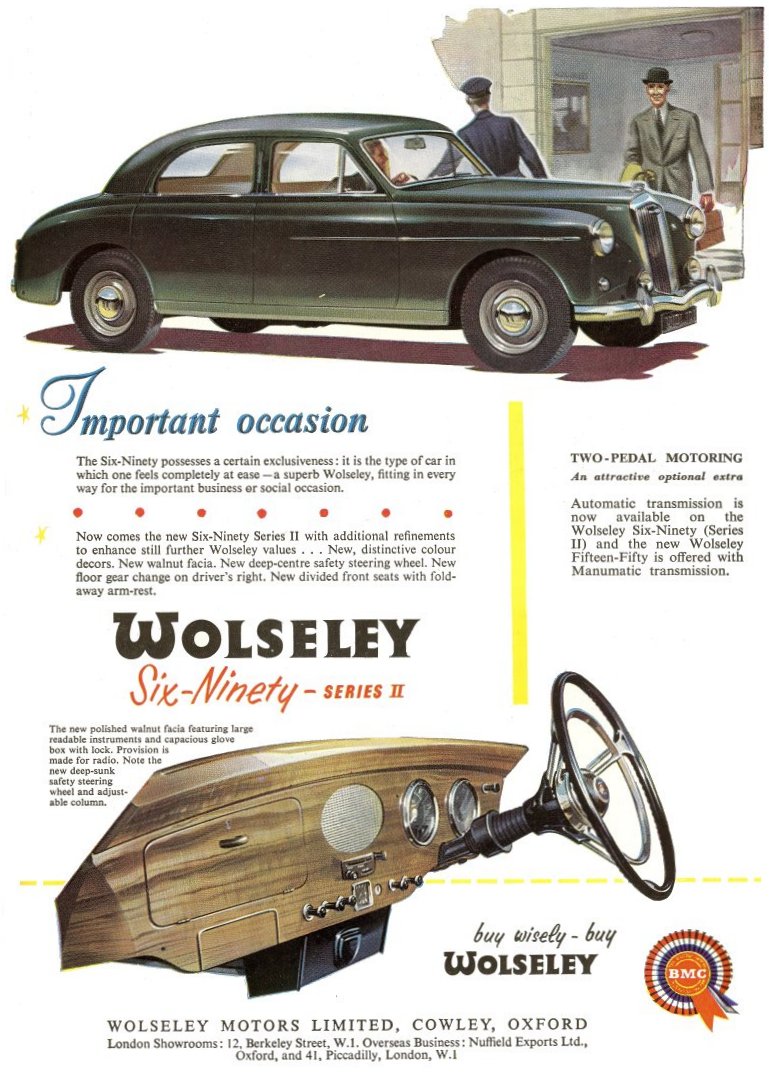Wolseley 6/90
Reviewed by Unique Cars and Parts
Our Rating: 3
Introduction
The first true "BMC era" big Wolseley 6/90 arrived in
1954 to replace the highly successful
Wolseley 6/80. The new 6/90 was a blend of Riley Pathfinder body, although with many design differences, and it did without the Mark 1 Pathfinder's sophisticated rear
suspension.
The 6/90 also had a higher body than the Pathfinder, although this did not detract from its graceful Gerald Palmer styling, and importantly the Wolseley was £140 cheaper.
All of the usual Wolseley features could be found, including illuminated grille badge, wood and leather interior trim. Under the hood was the smooth BMC C-Series 2639cc, six cylinder engine which could be found in many other BMC products of the time. The C-Series engine produced 95 hp (71 kW) and was mated to a four speed
manual transmission.
The hand brake control was under the dash to the side of the
steering column and the gearchange was column mounted opposite the dip switch. The leather trimmed front seats were mounted closely together and the rear bench had a fold down centre arm rest.
At the time, Wolseley aficionados were aghast to find a grey striped formica instrument panel and central large chrome mesh "cheese-cutter" speaker grille. This would be switched back to the more traditional polished walnut facia with the release of the Series II in
1957.
Other changes introduced on the Mark II included a deep-centre safety
steering wheel, changing the column mounted gear selector to a floor mounted gear stick, this being located unusually on the right hand side of the driver, and new divided front seats with a fold-away arm rest. You could also option an
automatic transmission, this thankfully not being the "Manumatic" variety to be found on the
Wolseley 15/50.
In production for only 8 months, the Series II gave way to the Series III in
1958 after only 1024 had been made. The Series III included larger power
brakes and a larger rear window. This design was also available, rebadged, as Riley's Pathfinder replacement, the ill-fated Two-Point-Six. 5052 were made.
The big Wolseley was competitively priced, and quickly gained a good reputation for splendid steering, road holding and braking, togther with lively performance and acceptable economy, with a very high standard of comfort.
6/90 production ended in
1959 with the introduction of the
Pininfarina-designed 6/99.




